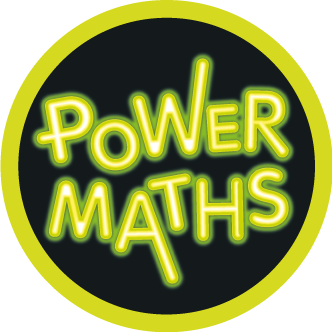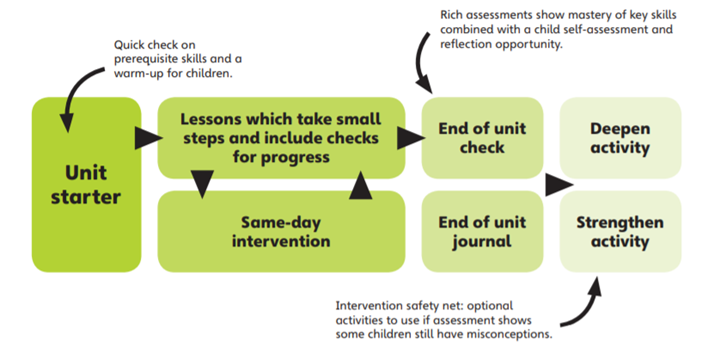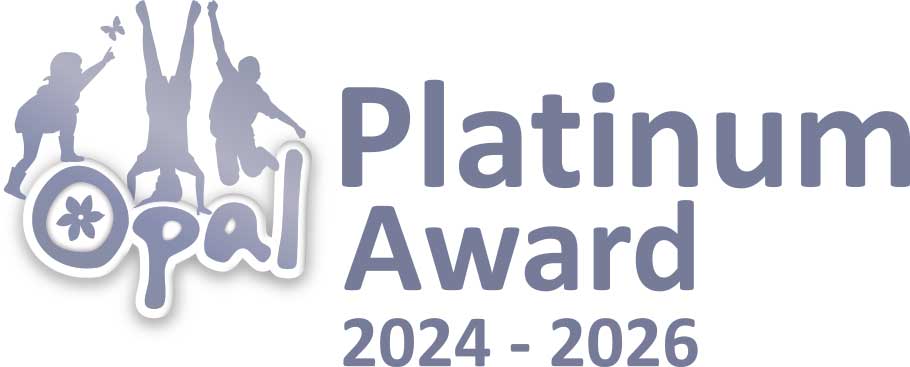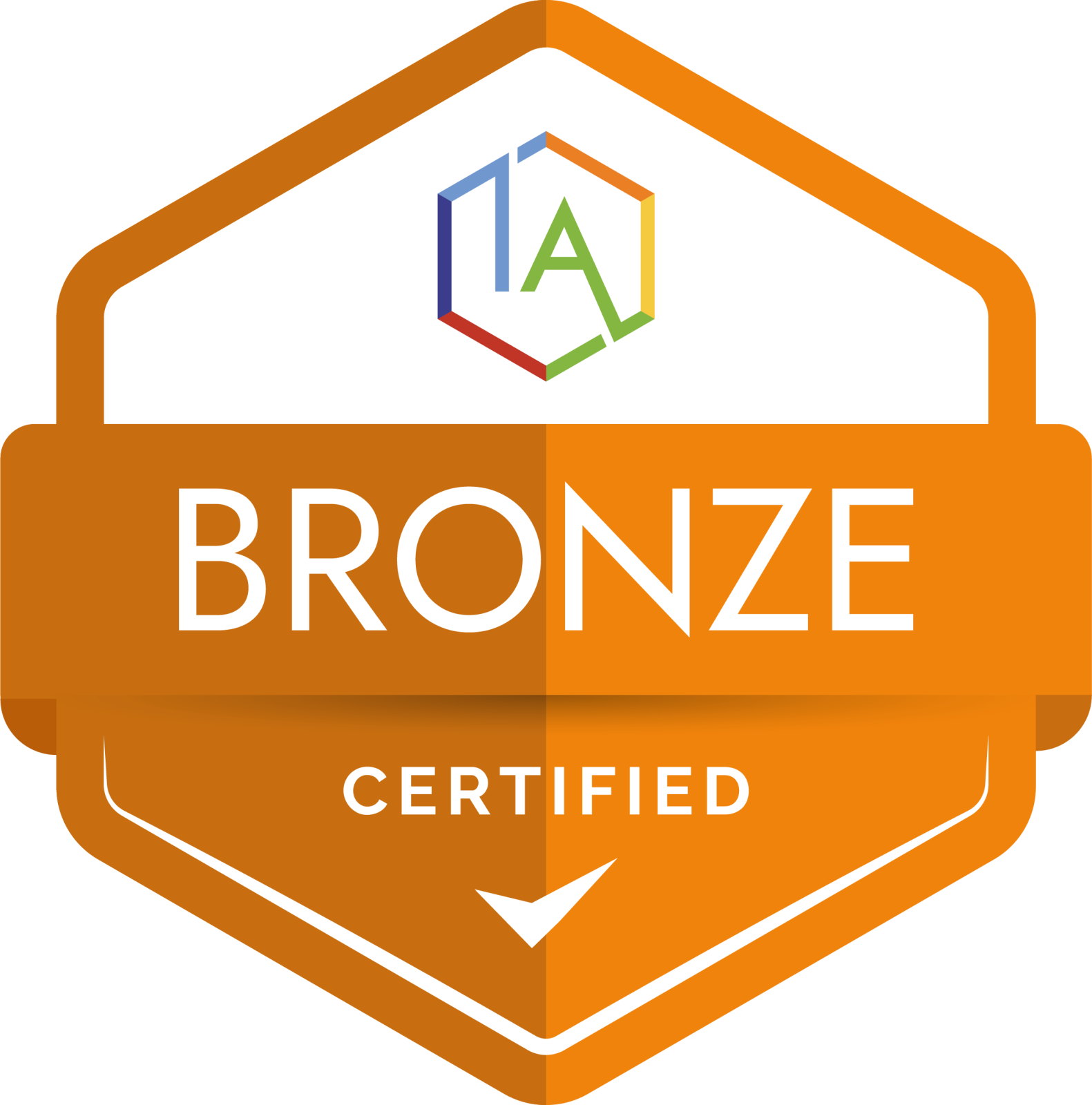Maths
Intent:
Here at Joseph Cash, we recognise that mathematics is a fundamental part of daily life that underpins the skills required in many other curriculum areas as well as in the wider world. We aim to build citizens of the future who are resilient, confident mathematicians with a deep and secure understanding that they can draw upon throughout their life.
Curriculum Organisation:
There are a number of key components which make up our maths curriculum. These are:
- Power Maths: Our main maths curriculum, built on mastery foundations.
- Rock Star Word Tour: A focus on times tables and key skills using Times Table Rock Stars as a basis.
- MOT: Daily retrieval practice sessions and opportunities for pre-teach or consolidation of topics.
- School Jam: Personalised practice for KS1.
- Maths Flex: Personalised Practice for KS2.
'Power Maths' programme

What is Power Maths?
Power Maths is a resource that has been designed for UK schools based on research and extensive experience of teaching and learning around the world and here in the UK. It has been designed to support and challenge all pupils, and is built on the belief that EVERYONE can learn maths successfully.
How does this support our approach to teaching?
The philosophy behind Power Maths is that being successful in maths is not just about rote-learning procedures and methods, but is instead about problem solving, thinking and discussing. Many people feel they were taught maths in a way that was about memorising formulas and calculation methods, then having to apply them without any real understanding of what or how these methods actually work. Power Maths includes practice questions to help children develop fluent recall and develop their conceptual understanding. Power Maths uses growth mindset characters to prompt, encourage and question children. They spark curiosity, engage reasoning, secure understanding and deepen learning for all.
The Power Maths Teaching Model
At the heart of Power Maths is a clearly structured teaching and learning process that helps you make certain that every child masters each maths concept securely and deeply. For each year group, the curriculum is broken down into core concepts, taught in units. A unit divides into smaller learning steps - lessons. Step by step, strong foundations of cumulative knowledge and understanding are built.

The Power Maths Lesson Sequence
At the heart of Power Maths is a unique lesson sequence designed to empower children to understand core concepts and grow in confidence. Embracing the National Centre for Excellence in the Teaching of Mathematics' (NCETM's) definition of mastery, the sequence guides and shapes every Power Maths less taught. Flexibility is built into the Power Maths programme so there is no one-to-one mapping of lessons and concepts meaning you can pace your teaching according to your class. While some children will need to spend longer on a particular concept (through interventions or additional lessons), others will reach deeper levels of understanding. However, it is important that the class moves forward together through the termly schedules.
Whole Class Approach
Traditionally, children who learn quickly have been accelerated through the curriculum. As a consequence, their learning may be superficial and will lack the many benefits of enabling children to learn with and from each other. By contrast, Power Maths' mastery approach value real understanding and richer, deeper learning above speed. It sees all children learning the same concept in small, cumulative steps, each finding and mastering challenge at their own level. Remember that in mastery maths, EVERYONE can do maths! Those who grasp a concept easily have time to explore and understand the concept at a deeper level. The whole class therefore moves through the curriculum at broadly the same pace via individual learning journeys.
Lesson Design
Each lessons includes the following parts shown below:
Power up: A 5 minute mental recall activity to help gain fluency in Mathematical facts.
Discover and Share: This part of the lesson encourages ping pong teaching, a model where pair work, shared learning and teaching instructions are back and forth. This part encourages some discovery in pairs and some whole class discussions.
Think Together: This part of the lesson is where we follow the I do, we do, you do method. The teacher models and explains, the children all have a go together and get chance to practise before the independent task.
Practice: Children use their Power Maths Workbooks during this part of the lesson and are encouraged to use resources modelled during the 'think together' section form the enable table. Children can work independently or collaboratively during this part.
Reflect: In the workbooks, children have an opportunity to consolidate their learning independently, as well as sharing this in a class
Deeper Learning Challenge: Additionally, we also use deeper learning challenges if children complete the workbook and have extra time during the lesson to help deepen their understanding.

What if my child needs a confidence boost, or wants to be challenged further?
Power Maths is based on a ‘small-steps’ approach, sometimes called a mastery approach. This means that the concepts are broken down so that your child can master one idea without feeling over-whelmed. There are a range of fluency, reasoning and problem solving questions in each lesson that are designed to support the different needs and confidence levels within a class, while at the same time fostering a spirit of working and learning together. Each lesson includes a challenge question for those children who can delve deeper into a concept.
Please click the links below to read more about the mastery approach to maths and about why a growth mindset is so important!
Mastery Factsheet for Parents Growth Mindset Factsheet for parents
Calculation Policies
Reception Calculation PolicyTimes Table Rock Stars and the JC World Tour...

Intention
When it comes to times tables, speed AND accuracy are important – the more facts your child remembers, the easier it is for them to do harder calculations.
Times Table Rock Stars is a fun and challenging programme designed to help students master the times tables! To be a Times Table Rock Star you need to answer any multiplication fact up to 12×12 in less than 3 seconds!
How to get the most out of it
World famous rock musicians are the best at what they do because they've spent hours practising guitar chords, writing music or playing on the drums. It's just the same with times tables – all Times Table Rock Stars need to practise and practise and practise.
It's essential that your child does a little bit of times table practice every night. Short bursts of daily practice are more effective than spending hours once a week.
And this is where you come in. For your child to be fully motivated and for them to get the best out of the practice, they need your help. Without your praise and your reminders, without you sitting down next to them or checking their work, practising times tables will not feel important to your child.
In this guide, we have set out a plan for you to follow. It's the same plan every night but the times tables do change. Our recommendation is that you are there to help them every evening for half hour during the first two weeks. This will help to establish a routine. After that, we recommend that you help your child get started for the first 10 minutes and then check on them at the end.
Over the next few weeks and months, your child WILL get faster and more accurate with the times tables. All your hard work and theirs WILL make them a Times Table Rock Star!
Rock Status
It’s helpful to understand that the quicker your child can answer a times tables question, the higher their Rock Status. This list is a guide to help your child work out their Rock Status:
|
≤ 1 sec/qu = Rock Hero ≤ 2 secs/qu = Rock Legend ≤ 3 secs/qu = Rock Star ≤ 4 secs = Headliner ≤ 5 secs/qu = Support Act ≤ 6 secs/qu = Breakthrough Artist |
≤ 7 secs/qu = Unsigned Act ≤ 8 secs/qu = Gigger ≤ 9 secs/qu = Busker ≤ 10 secs/qu = Garage Rocker > 10 secs/qu = Wannabe |
Practice Plan
Each evening, your child should follow this plan in the order presented below:
Read the times tables out loud (3 minutes) –you will find a link below to download all the times tables written out from the 3s up to the 12s. Together with your child, read the times tables that we are focusing on that week. Do it a second time round but this time your child should be trying to say them without reading them from the page. It is more important that they say them correctly than say them quickly at this stage.
Scatter tables (up to 5 minutes) – you will find a link below to download Scatter Tables at the end of this document. To use them, you call out a question from the times table you are focusing on and your child should point to the answer on the page. For example, if you are concentrating on the 5 times table, then find the Scatter Table for the 5s and call out questions like, “9 times 5” (your child points to 45), “6 times 5” (your child points to 30) or “5 times 12” (your child points to 60). Your child should be trying to get them correct each time and not worrying about the speed.
Write tables on a piece of paper (up to 5 minutes) – Your child should write down the times tables being focused on that week. Any piece of paper will do.
Play online (up to 10 minutes) – Your child needs to have a login for ttrockstars.com from their class teacher. Then they should play for a short while until they are successfully answering the questions quickly. Let your child’s teacher know if you have difficulty accessing the internet at home or if you have difficulty getting on to ttrockstars.com. You can also use the contact details on the website for assistance.
Total: approximately 25 minutes
There is also a link below to some downloadable multiplication and division sheets below if your child wishes to practise further.
Scatter Tables Times tables list to learn
Times tables practice sheets TTRS Parent Help
How you can help at home
How you can help at home...















